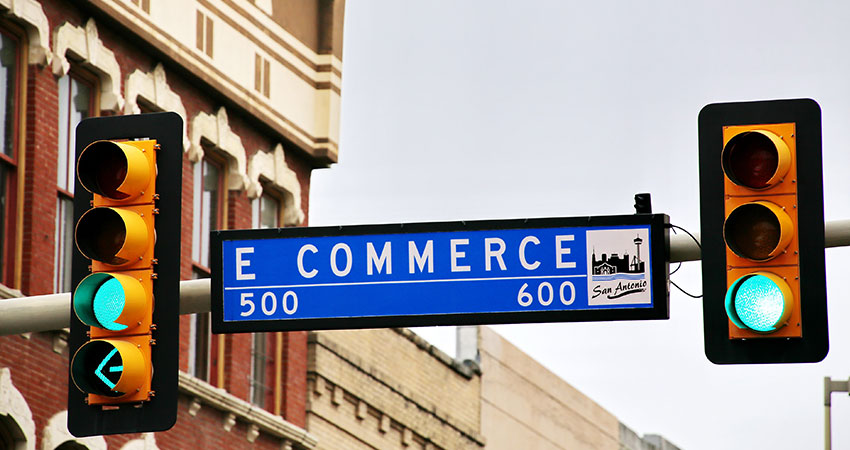An ocean of ink has been written about COVID-19’s impact on ecommerce, an endless stream of op-eds, surveys and analyses on how industries have shifted irreversibly to digital. These essays tend to focus on retail’s triumphs under pressure, so it’s easy to forget the frequent failures and shortcomings: PPE shortages and toilet paper hoarding, lack of yeast and flour for new bakers, and even a months-long, nationwide dearth of bucatini.
As a bored, locked-down country lurched from trend to trend, retailers scrambled to cover demand. It’s no surprise ecommerce marketplaces thrived, connecting customers with third-party sellers to outperform even the strong growth of ecommerce as a whole. Mirakl’s first Enterprise Marketplace Index, consisting of data from 60 global ecommerce marketplaces representing 50,000 third-party sellers and more than 60 million products, found that marketplaces grew by 81% year-over-year, more than double the rate of overall ecommerce.
Ecommerce Marketplaces Boomed Through Diversification
The diversity of ecommerce marketplaces gives them a particular resilience during periods of complex change. COVID-19 placed unexpected pressures on retailers; if they were logistically reliant on a single link in the supply and distribution chains, systems broke. Marketplaces diversify the supply chain, distributing these novel pressures across a network of third-party suppliers. While one node may fail as a result of shifting market trends, the network itself is far more likely to survive by compensating for any weaknesses.
Ecommerce marketplaces provide retailers with agility, a crucial asset when customer trends can exhaust retailer stocks in a matter of minutes. Third-party sellers can quickly fill in the gaps to ensure that retailers can ride the wave rather than be swept away.
Marketplace retailers expanded their network of third-party sellers by an average of 46%, according to the Mirakl index, with the GMV of each seller increasing by an average of 24%. This growth proved crucial in a retail environment dependent on product availability. While legacy retailers struggled to maintain stock of popular items online, marketplaces could turn to third-party suppliers to meet demand spikes.
Bringing Third Party to the Party
Retailers successful in 2020 took a thoughtful, hands-on approach to their marketplace development. For one multinational furniture company, this meant ensuring that third-party products were placed on an equal footing with the retailer’s own products. The expanded product assortment drove traffic to the site and boosted conversions, while the frequency of orders combining own-brand and third-party items indicated that shoppers viewed the products as a single, synergistic offering.
A U.S. clothing retailer took a different approach to its marketplace strategy by clearly identifying and endorsing third-party products as an extension of the brand in a featured program. By presenting the marketplace as an opportunity for exploration and discovery, the company was able to develop customer loyalty and boost return visits through the regular introduction of intriguing new products and partners.
Piquing curiosity among customers provides retailers with the opportunity to add new revenue streams, like installation or maintenance, alongside first- and third-party products. In the case of that furniture company, we see a transaction doesn’t end with the sale. The retailer can offer installation, repair and warranty services, extending the customer relationship and establishing more touchpoints to drive customer loyalty.
Why Marketplace Momentum Will Outlast COVID
While the end of the pandemic will see the return of in-person shopping and entertainment, consumers have been further conditioned to expect the availability of any product, anytime, anywhere. The bar has been set for companies to deliver on their brand promise against accelerated timelines, and ecommerce marketplaces will demonstrate their staying power by helping retailers meet these heightened expectations.
As brands add in-person shopping back into their omnichannel sales strategies, marketplaces will be essential in boosting customer acquisition and retention across all channels. The Enterprise Marketplace Index found that marketplaces led to a 34% increase in site traffic for retailers in 2020. Beyond the black-and-white sales numbers associated with the introduction of third-party products, ecommerce marketplaces deliver a halo effect to retailers in the form of increased traffic and customer satisfaction.
The marketplace model creates a virtuous cycle of customer acquisition for retailers. Opening the doors to third-party sellers offers a low-cost way to dramatically expand product choice, which in turn attracts new customers. New items from new partners means product assortments are constantly changing, giving shoppers even more reason to make marketplaces a regular shopping destination. What’s more, the vastly expanded product assortments made possible by marketplaces also allow businesses to test new products with little to no risk.
The pandemic year in retail provided the strongest proof point yet that consumers value convenience and reliability. And as retailers come to understand and appreciate the appeal of resilience, we can expect more legacy brands to rely on ecommerce marketplaces to develop a new source of revenue and bolster the bottom line.
Adrien Nussenbaum is cofounder and U.S. CEO of Mirakl

